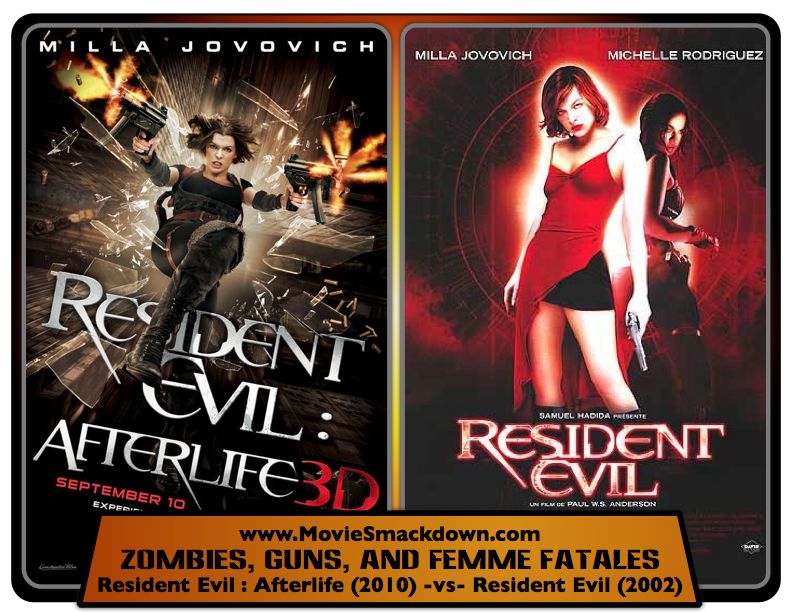
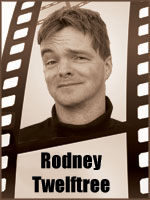 The Smackdown
The Smackdown
Guns, girls and zombies. Everything a film fan could want, comes together in the film saga based on the hugely popular video game, Resident Evil.
True, films based on computer games don’t have a prestigious history. For every good adaptation, there are a dozen bad ones. But in 2002, one such adaptation hit the big screen that set the bar for horror / action.
In this Smack, we’re putting on our lab coats, stirring up some carnage and introducing the Smackring to the zombie hordes of Raccoon City! Get ready to score an extra life, take your T-virus vaccination, and have that sharpened axe ready, as we set Resident Evil: Afterlife upon Resident Evil. Either way, with Milla Jovovich in both films, we win.
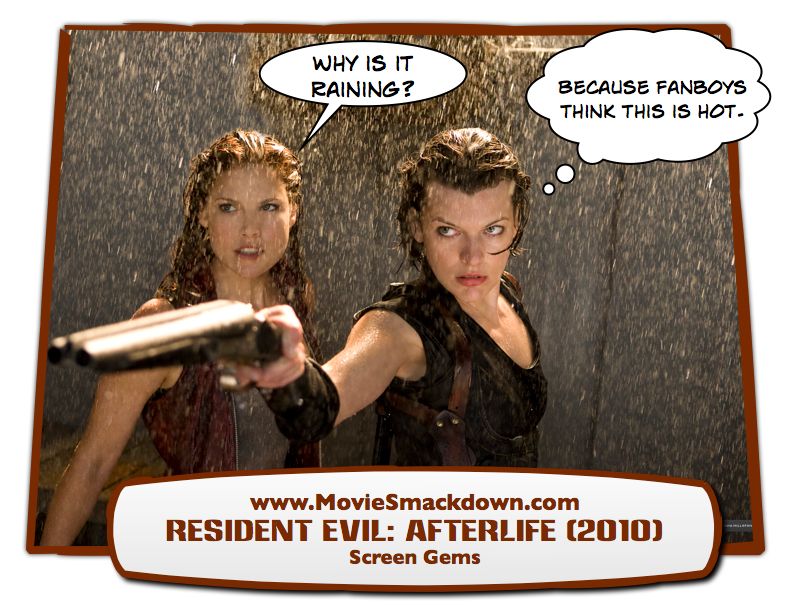
The Challenger
Milla Jovovich returns to the film saga that made her a bona fide action star, in the fourth entry into the live-action Resident Evil franchise. Her husband, director Paul WS Anderson, also returns to the helm after leaving the previous two sequels in the hands of others. Afterlife sees the return of Alice (Jovovich), Claire Redfield (Ali Larter) and several other familiar faces from the franchise, as well as a few newbies, all thrown together once more into the grinder of Anderson’s stylish directorial style. The film opens with Alice and her clones (see Resident Evil: Extinction for an explanation on that!) attacking the Japanese headquarters of the evil Umbrella Corporation in an attempt to kill the company’s Chairman, Albert Wesker (Shawn Roberts); it’s a failure, ending with Alice having her enhanced superhuman abilities removed and only barely surviving a massive plane crash.
Months later, she’s flying across the landscape of Alaska, on the hunt for a supposed Shangri-la for humanity — Arcadia, a place free of the T-virus infected plague, only to find that not only does Arcadia not exist there, but that her friend Claire is under the influence of an Umbrella-based technology. Together, they journey to Los Angeles, where they meet up with a group of rag-tag survivors holed up inside an old prison. As you’d expect, escape plans come and go, zombies attack the group with increasing frequency and increasing success, before a last ditch effort to escape to an offshore boat takes place. Weapons, explosions and stunts galore. It’s Resident Evil: Afterlife, and it’s exactly what you expect.
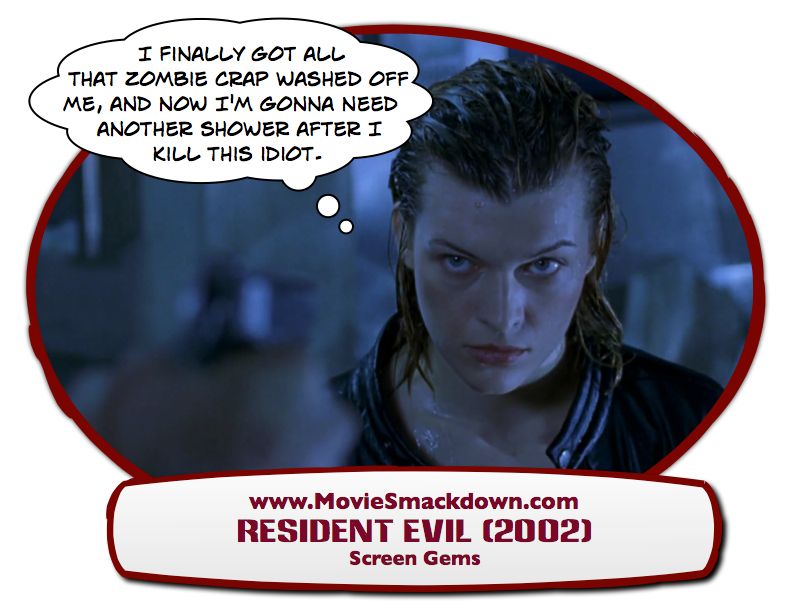 The Defending Champion
The Defending Champion
Released in 2002, the original Resident Evil film, helmed by Paul WS Anderson, is actually a pretty smart beast of a film. Spot-on production design, a genuinely creepy atmosphere and tone, coupled with some great set-pieces and effects, made Resident Evil one of the better films to burgeon from the womb of computer-game-to-film transitional afterbirth.
Milla Jovovich plays Alice, a woman who wakes in a strange mansion with no memory or her past, save flashes of some kind of wedding/party. A group of heavily armed soldiers swoop in and take her underground to an enormous industrial complex (known as The Hive) buried deep below Raccoon City — the ubiquitous Umbrella Corporation. It seems Umbrella have been engaging in some not-so-friendly genetic research, and some foreshadowed sabotage indicates that a deadly T-virus has escaped, turning the inhabitants of the complex into zombies. The military group are there to make sure the virus doesn’t escape to the surface.
Alice, whose own motives are gradually revealed throughout the film, has a link to not only Umbrella, but also the T-virus which will come into play in later films. A bunch of monsters, plenty of guns, and a pounding, pulsating action aesthetic ensure Resident Evil remains an effective sci-fi thriller.
The Scorecard
Let’s not make a mistake here: Resident Evil is not exactly highbrow cinema. It’s a franchise designed for one purpose — to entertain, with as minimal character development and plot development as possible, and with as many crazy stunts and effects as can be crammed into a standard film. You either get it, or you don’t. Folks who don’t will probably not even bother reading this Smack, because they already know that they don’t like this series of films. Those who do read this Smack will have already made up their mind.
Today, though, we’re going to figure out which of the two best entries into the franchise is actually THE best. It’s a given that both immediate sequels to Resident Evil, Resident Evil: Apocalypse (2004) and Resident Evil: Extinction (2007) generally didn’t improve on the original, whereas the critical reaction (amongst fans, that is) for Afterlife was that Anderson had returned this slimly plotted franchise to some semblance of “glory.” But with nearly a decade between them, would the original still hold up against the newer, flashier version?
The original Resident Evil took the game’s concept and turned it into reality. The computer franchise had been quite successful, due to its stunning graphics and gameplay, and director Paul WS Anderson was canny enough to not mess with it too much — he transferred the look and feel of the game right up onto the screen. Resident Evil wasn’t, however, a slavish recreation of the games, in the same way that Watchmen was a scene for scene rendition of the graphic novel. Rather, Anderson picked out key elements that made the game creepy and translated that across in his screenplay.
Resident Evil isn’t a genre defining film either, because Anderson steals plenty of visual cues from other films to inhabit his own (the laser-killer corridor reeks of the traps in the low-budget thriller Cube, with much the same result). He’s not afraid to take what works and ramp up the shock value.
The script also works on a number of levels, the first being that it takes itself seriously to a point, without pandering to the core fanbase by alienating those who aren’t familiar with the games (myself included). The second thing is that the script has virtually no fat on it — each scene leads organically into the next, each plot device is handled convincingly and with enough twists and mystery to spark an emotion from the viewer — something missing from a lot of modern-day horror/thriller films. The characters don’t just start doing things because they look cool, rather, they do them because the moment calls for it. Gun battles and monster fights are tense, life-threatening and believable.
Afterlife, on the other hand, lacks the urgency of its progenitor by an order of magnitude. Often, the characters seem to merely be going through the motions, as if controlled by strings we cannot see. Anderson’s script for Afterlife lacks the same organic structure, with plot twist upon plot twist occurring with neither the same impact nor the same clever, understated manner, leaving the viewer numb to the “shock” of it all.
The dialogue in Afterlife, much of which seems to be uttered through gritted teeth, doesn’t feel natural (by the standards of this franchise, that is), and is merely a tool to get to the next action sequence. Not that Afterlife has that many action sequences. Comparisons to the other sequels would seem to indicate that Afterlife gives up the energy of plentiful action moments for a more subdued story element, reminiscent of the original film, and I hesitate to say that I think this move is a wise one on Anderson’s behalf. He slows the pace down after a bravura opening assault sequence (which sees half of Tokyo obliterated — this film was made well before the recent Japanese earthquake, so I guess an element of poor timing might be at play here), to give his characters time to breathe and grow. Not that they do much of that anyway, as the plot never dwells on their feelings or emotions long enough to allow us as viewers to attach ourselves to them.
Still, this is Resident Evil, and you can’t have everything. The balance between action and story in Afterlife is closer to the original film than either of the other sequels, but I still hold the belief that Resident Evil did it better.
Another key element to this franchise has been the casting, and in Afterlife, only one weak link really pulls the film down. Shawn Roberts delivers what can only be described as a tree-trunk-like performance as the films central antagonist, his scowling and teeth-grinding delivery of Albert Wesker both ineffectual and almost a caricature of a Hollywood Bad Guy archetype. The lack of naturalism in his performance undermines the rest of the film. Maybe Roberts was told to act like that, maybe not, but the character is weak at best, and Roberts makes him weaker. He plays it like a weird mix of Neo, Agent Smith and The Architect, with a hint of The Terminator thrown in for good measure.
In Resident Evil, the performances are all earnestly played by the actors, including Jovovich as the innocent ingenue, Michelle Rodriguez as a female operative sent in with the boys, and James Purefoy as the is-he-or-isn’t-he-a-bad-guy square jawed leading man. Colin Salmon, best known for his work as an MI6 operative in the Pierce Brosnan Bond films, plays the leader of the group of operatives sent in to secure the Hive. He delivers his deadpan lines with the surety of an accomplished British actor, although you kinda get the sense he’s the only one in on the joke.
Afterlife, while it once more represents the ensemble method of filmmaking, offers nothing new to the genre, with the double-crossing movie producer, the young former-swim-champ, and the I-was-famous-before-this-happened basketball star all appearing as rote characters with nothing better to do than advance the story or get killed off. Afterlife struggles for endearing characters, while Resident Evil has them in spades.
Resident Evil and Afterlife are two different films as far as production design go. The original is a claustrophobic, single-location set film, with plenty of dark shadows and sneaky monsters flinging themselves out at the camera at random moments, accompanied by the pounding, pulsating score from Marilyn Manson and Marco Beltrami. Afterlife seems to focus more on establishing the epic-ness of the franchise, with plenty of sidebar action taking place to set up potential sequels down the track whilst maintaining a similar openness to Extinction. The shadowy corners and whispers in the dark are minimal in Afterlife, where they worked so well in Resident Evil.
A major problem I had with Afterlife, while I think of it, is that Anderson goes to great pains to de-power Alice from her Extinction T-virus enhancements, and yet does nothing with it as a result. We see Alice lose her incredible strength, speed and ability to heal, and yet the tension this re-humanizing might give the film is lost, as Alice simply continues her zombie-killing antics without pausing to worry. There’s no sense of tension in the fact she might be killed, and it feels a little like this story development might have been an afterthought during the scripting, and quickly forgotten during filming. Of all the faults in Afterlife, this is the most egregious.
Don’t get me wrong: Afterlife is a great film to watch, for the simple, action-oriented gore-fest it presents itself as. It’s not highbrow filmmaking, and any faults I could pick out of it are hardly going to spoil your enjoyment of it, if you’re a fan. The same could be said of the original film, which offers nothing to say on the human condition other than if you’re being chased by zombies, run like hell.
The monsters in Resident Evil are genuinely chilling, while the effect has since worn off through the sequels, with a variety of giant, hulking uber-monsters sent to kill Alice and Company are dispatched with increasingly violent (and messy) methods. Afterlife is no exception, replacing the scraping, shadow-dwelling terrors of Resident Evil for a brutal, giant-axe-wielding monstrosity with limited potential and appeal. I much preferred the dank, dripping scares of Resident Evil to the daylight lensed zombies of Afterlife. Why they decided that setting this film in broad daylight much of the time would be scarier is beyond me — shadows breed fear. And yet Anderson seems to have forgotten this.
Afterlife has action sequences that are technically better and more proficient, however, their overall effect is cumulative rather than specific. I think the opening assault sequence to Afterlife might just be the best in the entire saga, but the first axe-dragging shuffle of a zombie in Resident Evil gives me the chills just thinking about it. Is the more effective film the one that scares you the most, or the one that excites you the most? Afterlife is definitely the more exciting, while Resident Evil is designed more for scares than anything else.
The Decision
Comparing Resident Evil with Resident Evil: Afterlife might be like comparing Michael Bay explosions — there’s similarity, but each one is different. They’re films designed to cater to a specific market, and it’s not a market where intellect and logic mean a hell of a lot. Films with guns, sexy women wearing very cool outfits and plenty of kill-shots to zombie heads are the order of the day, and the result herein reflects this kind of mentality.
Afterlife might be the more explosive, the more epic of the films in this franchise, and boasts any number of improvements in the technical department on 2002’s entry, but it lacks the genuinely tense tone the original gave us in spades. Anderson’s a stylish director, no doubt, and he’s not afraid to steal the work of others to put into his own films, but I think the bar set by Resident Evil is yet to be beaten. In this instance, the original is still the best.

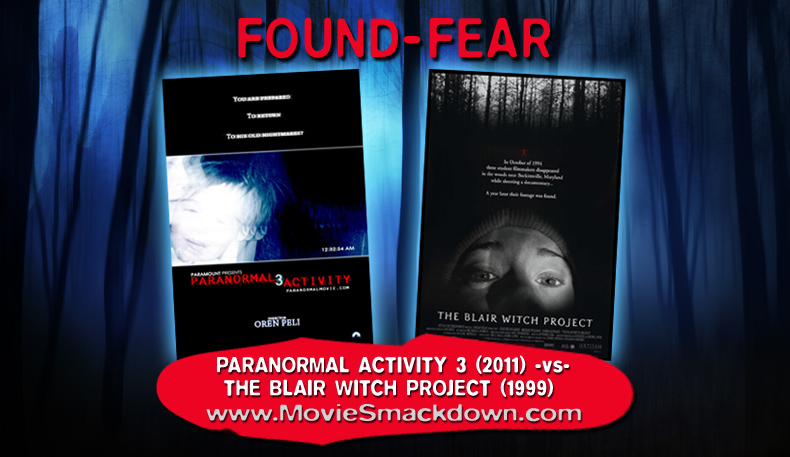
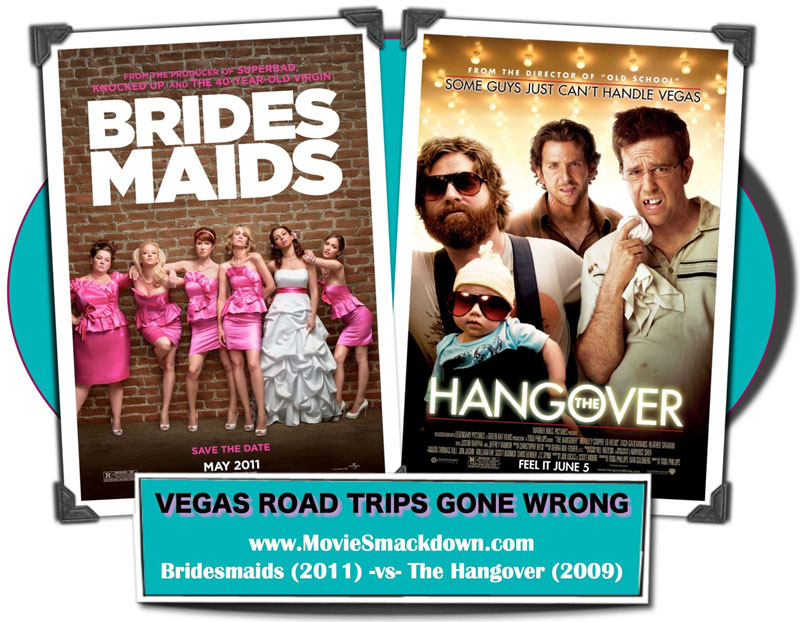
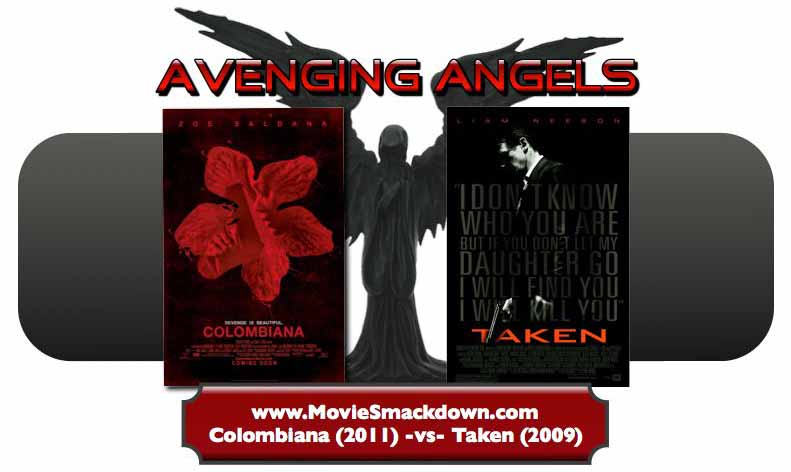
Leave a Reply